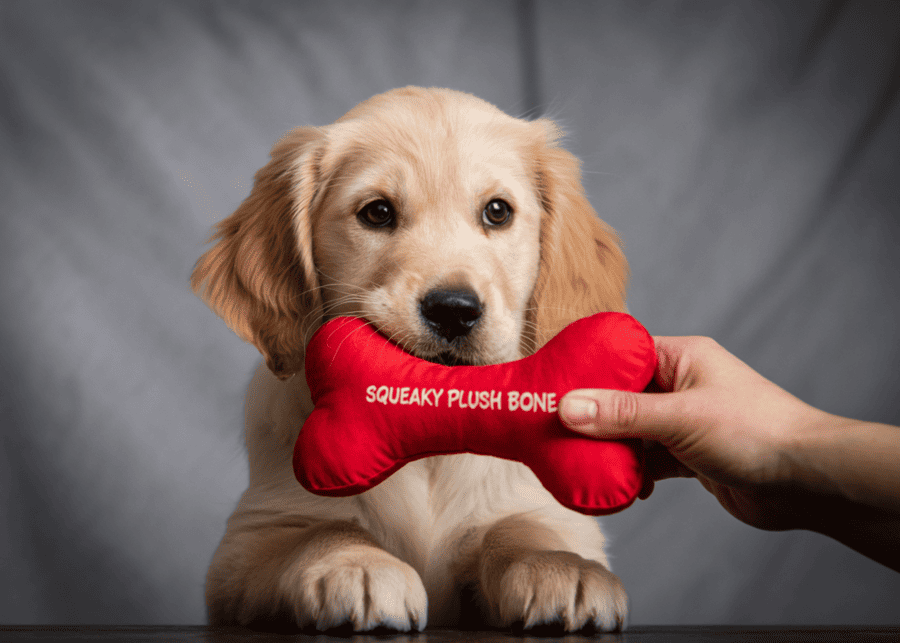Training your dog feels like a chore, and they quickly lose focus. What if a simple toy could make your training sessions both fun and incredibly effective?
The key is to use the squeaky toy as a high-value event marker and reward. The instant your dog performs a command, use a sharp squeak to mark the behavior, then immediately reward them with a short, exciting play session with that toy.
Using a toy for training might seem simple, but there’s a science to it. For over ten years, my company, Preeminent, has been designing and manufacturing pet toys for brands all over the world. I’ve seen firsthand how a well-designed squeaky toy can transform communication between a person and their dog. It’s not just about distraction; it’s about motivation1. Let’s break down how you can unlock this potential and turn playtime into a powerful training tool.
What’s the Science Behind Using Squeaky Toys for Dog Training?
Ever wonder why that squeak drives your dog wild? You might think it’s just an annoying noise, but it’s actually tapping directly into their deep-seated instincts.
The high-pitched squeak mimics the sound of distressed small prey. This triggers a dog’s innate prey drive, a powerful instinct that makes the toy an exciting, high-value reward for capturing their full attention and reinforcing commands.
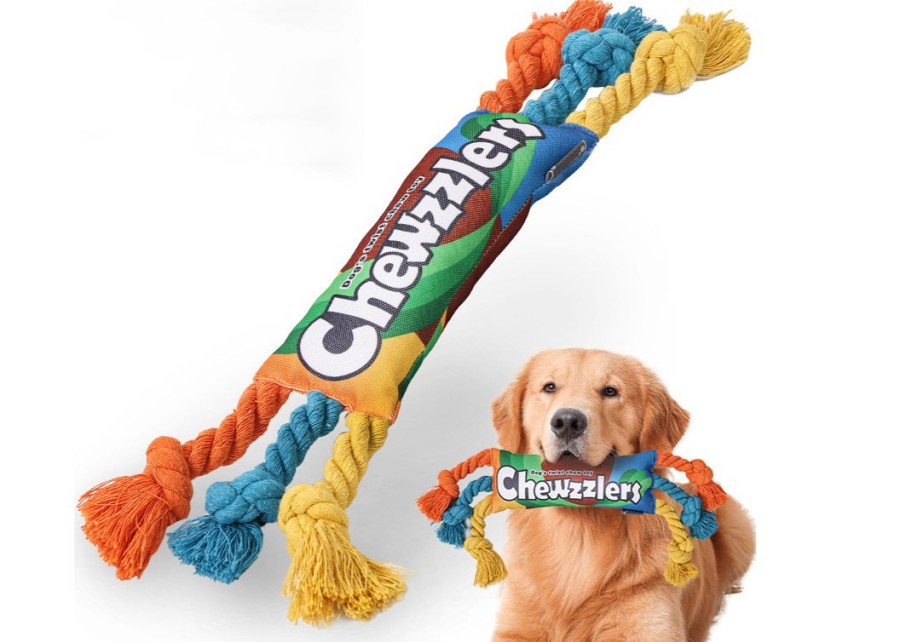
The Psychology and Physiology of the Squeak
When a dog hears a high-frequency squeak, it’s not just a sound; it’s a biological trigger. This sound activates the seeking-and-hunting part of their brain, releasing a small burst of dopamine. This makes the dog feel good and want to repeat the action that led to the sound. As manufacturers, we don’t just randomly insert squeakers. We work with animal behaviorists to select frequencies that are most stimulating for the majority of dog breeds. The goal is to create a sound that is novel and exciting enough to cut through distractions. This isn’t just about low-cost production; it’s about applied behavioral science2 to create a more effective tool.
Squeaky Toys vs. Other Training Rewards
A squeaky toy isn’t meant to replace all other rewards, but it has unique advantages in specific scenarios. Treats are great, but they can be slow to deliver and less exciting for some dogs. Praise is essential but may not be strong enough to capture focus in a high-distraction environment. The squeak is instantaneous and exciting.
| Reward Type | Best For | Pros | Cons |
|---|---|---|---|
| Squeaky Toy | Attention, Recall, Speed | Instantaneous, high excitement, builds play drive | Can cause over-excitement, not for all dogs |
| Food Treats | Luring, Calm Tasks, Precision | Highly motivating, easy to control, universal | Can be messy, slow to deliver, calories add up |
| Praise/Affection | Reinforcing Known Cues | Always available, builds bond, no cost | Low value in distracting settings, not a primary motivator |
The squeaky toy’s greatest strength is its ability to act as an "event marker3" that is more exciting than a verbal cue like "Yes!" or a clicker.
What are the Step-by-Step Methods for Using Squeaky Toys in Basic Obedience Training?
Teaching "sit" or "stay" can get repetitive fast. Your dog gets bored with the same old treats, and their attention starts to wander. A squeaky toy can turn that drill into an exciting game.
Use the squeak as a "marker" the exact moment your dog performs the command (e.g., their rear hits the floor for "sit"). Immediately follow that squeak with a short, rewarding session of play with the toy.
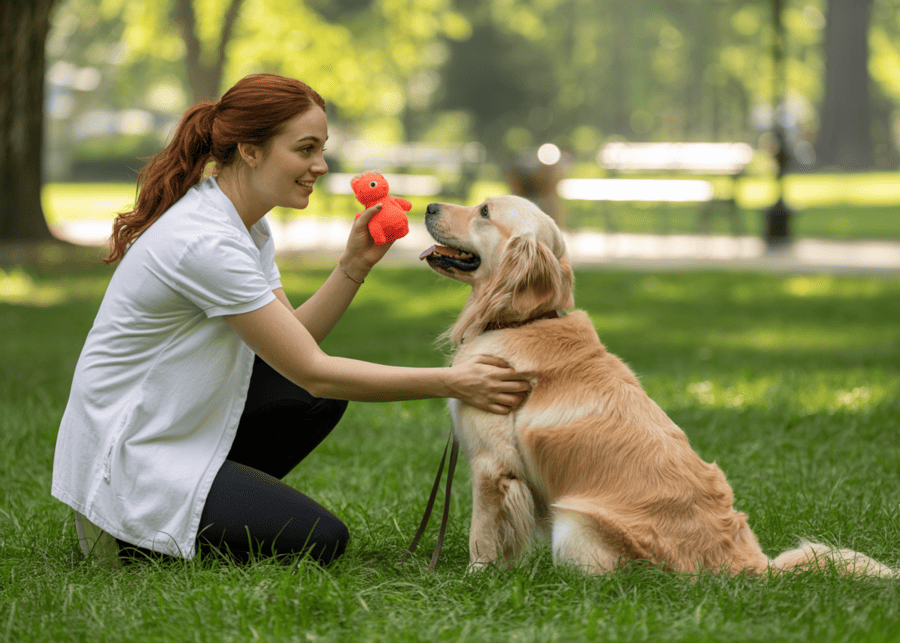
The "Squeak-and-Play" Protocol
Think of the squeak as a clicker, but with a built-in reward. It tells your dog, "THAT! What you just did is exactly what I wanted!"
- Get Attention: Hold the toy but keep it still and quiet. Make sure your dog is focused on you, not just the toy.
- Give the Command: Clearly say your command, like "Sit."
- Mark the Action: The very instant your dog’s rear touches the ground, give one sharp squeak. Timing is everything.
- Reward with Play: Immediately say "Get it!" and toss the toy a short distance or engage in a quick game of tug. Keep it short and fun, just 15-20 seconds.
- Reset: Take the toy back with a command like "Drop it" (you may need to trade for a treat at first) and start again.
Common Mistakes to Avoid
From my experience talking to brand owners who work with trainers, I’ve learned about the common pitfalls. Avoid these to keep the toy’s value high.
- Squeaking as a Lure: Don’t squeak the toy to get your dog to sit. The squeak is the reward, not the prompt.
- Bad Timing: Squeaking after the dog has already sat and started to get up rewards the wrong action. It must be instantaneous.
- Constant Access: If the training toy is left out with all the other toys, it loses its special value. It should be a "special occasion" item.
How Can Squeaky Toys Supercharge Recall and Focus Training?
Your dog ignoring you at the park is more than frustrating; it can be dangerous. A special squeak can become your ultimate secret weapon for getting them to come back, every single time.
Dedicate a specific squeaky toy that is used only for recall training. Its unique sound becomes a powerful emergency cue that means "come back to me right now for the best reward ever."
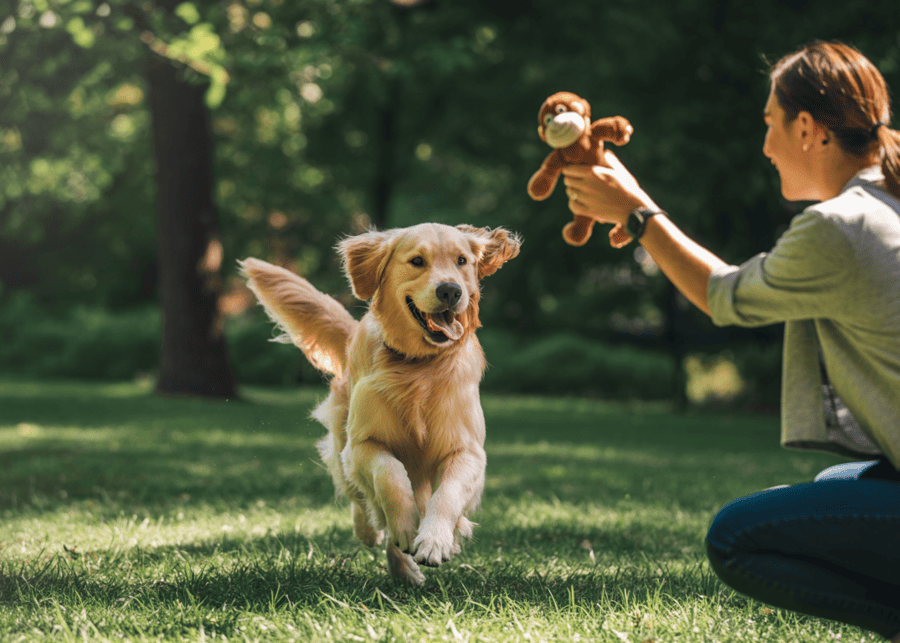
Building an "Emergency Recall" Cue
This is where the toy becomes a critical safety tool, not just a plaything. This insight comes directly from professional trainers we supply. They request toys with unique sounds specifically for this purpose.
- Choose a Special Toy: Select a toy with a distinct squeak that your dog loves. This toy now lives in a drawer and only comes out for recall practice.
- Charge the Sound: In a quiet room, squeak the toy and immediately give your dog a super high-value treat (like chicken or cheese). Repeat this 10 times. Do this for a few days until the sound alone makes your dog look at you expectantly.
- Practice on a Long Line: In your yard, let your dog wander. Squeak the toy. The moment they turn and run to you, praise them enthusiastically and have a wild, 20-second play party with the toy.
- Reserve it for Recall: Never use this toy for casual play. Its power lies in its novelty and its exclusive association with coming back to you.
Enhancing General Focus
For attention training4, the squeak can be used to break your dog’s fixation on a distraction. The moment your dog looks at another dog or person, give a quick, quiet squeak. When their head whips around to look at you, mark with a "Yes!" and reward with a treat. You are teaching them that checking in with you is more rewarding than fixating on the environment.
How Do You Choose the Right Squeaky Toy for Training?
Walking into a pet store can be overwhelming. The wall of toys is endless, and it’s frustrating to buy something that’s destroyed in minutes or that your dog completely ignores.
For training, choose a toy that is durable, easy for you to handle, and sized right for your dog’s mouth. The sound should be engaging enough to get their attention but not so loud it makes them frantic.
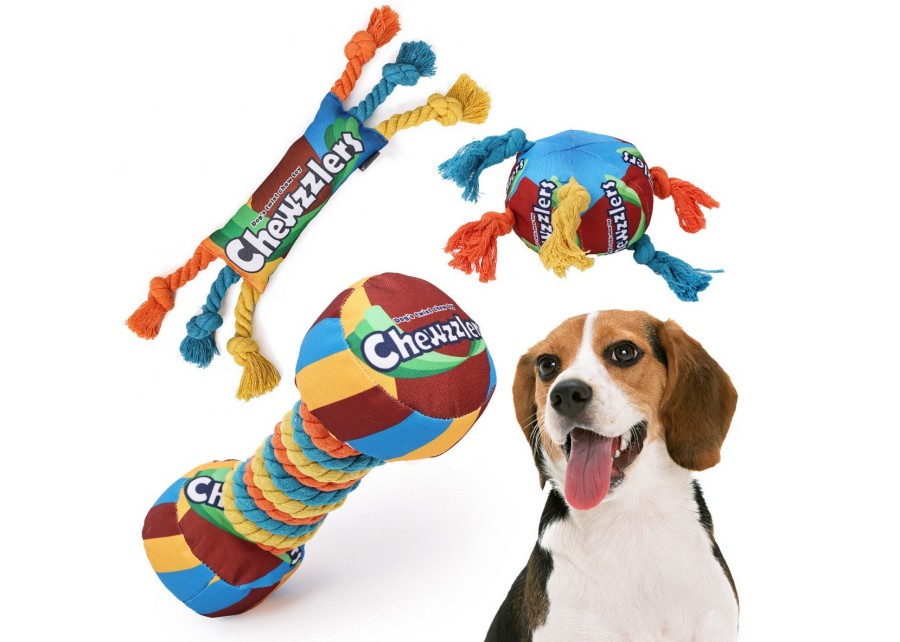
Key Features of a Good Training Toy
When we design toys for our B2B clients, we focus on function over simple aesthetics. A training toy is a piece of equipment.
- Durability: Look for toys made from tough rubber or ballistic nylon with reinforced seams. For training, the toy will be used in short, intense bursts, but a powerful chewer can still do damage.
- Size and Shape: It should be easy for you to hold, conceal, and throw. For the dog, it should be easy to pick up and carry as a reward. Long, thin shapes are often good for a quick game of tug.
- Sound Control: A good training toy has a consistent squeak. Some of the best designs for professional trainers, which we often produce, have multiple squeakers with different tones to keep the dog engaged.
Matching the Toy to the Training Goal
The right tool for the right job makes all the difference.
| Training Goal | Recommended Toy Type | Why It Works |
|---|---|---|
| Emergency Recall | Toy with a unique, loud squeaker | The distinct sound cuts through outdoor distractions. |
| Basic Obedience | Small, easy-to-handle squeaky ball | Allows for quick, precise marking and reward delivery. |
| Focus/Attention | Lower-pitched, softer squeaker | Gets attention without causing over-the-top excitement. |
| Puppy Socialization | Plush toy with a gentle squeaker | The soft texture and sound are less intimidating for young dogs. |
How Do You Solve Common Problems with Squeaky Toy Training?
Squeaky toys are a fantastic tool, but it’s natural to have concerns. You might worry about your dog’s hearing or that you’re creating a toy-obsessed monster who won’t listen without a squeak.
To prevent dependency, vary your rewards. Use the squeaky toy, but also use praise and occasional treats. Always end training sessions with a clear cue like "All done," and put the special training toy away.
Are Squeaky Toys Bad for a Dog’s Hearing?
This is a common concern we hear from clients. The vast majority of commercially produced squeakers operate at a frequency and decibel level that is stimulating but perfectly safe for dogs. However, every dog is an individual. If your dog seems sensitive or you’re training in a small, echo-prone space, opt for toys with lower-pitched "grunt" sounds instead of high-pitched squeaks. As manufacturers, we can easily customize the sound profile of a toy to meet specific needs.
Preventing "Squeaker Addiction"
The goal is for the dog to obey the command, not to become dependent on the gear.
- Use Intermittent Reinforcement: Once your dog reliably knows a command, don’t reward with the toy every single time. Start rewarding every second or third success. Mix in verbal praise or a quick pat. This actually makes the behavior stronger.
- Teach an "Off Switch": The training session must have a clear beginning and end. When you put the toy away, the game is over. This teaches the dog self-control.
When to Phase Out the Squeaky Toy
The toy is a tool for teaching and motivation, not a lifelong crutch. Once a behavior is solid and reliable in various environments, you can start to phase out the toy as the primary reward. It can still be used occasionally to keep things fun and exciting, but your dog should respond to the command itself, knowing that a reward (praise, a pat, a treat, or sometimes the toy) might come. The toy’s job is to build a strong foundation of positive association with your commands.
Conclusion
Squeaky toys are powerful training tools. At Preeminent, we help brands harness this power. Partner with us to create custom training toys that delight pets and build your brand’s reputation.
-
Discover the role of motivation in dog training and how it can lead to more effective sessions with your pet. ↩
-
Exploring applied behavioral science can provide insights into effective training methods and improve your approach to dog behavior. ↩
-
Learning about event markers can help you refine your training strategies, ensuring better communication with your dog. ↩
-
Discover strategies to enhance your dog’s focus and responsiveness, making training sessions more effective and enjoyable. ↩

